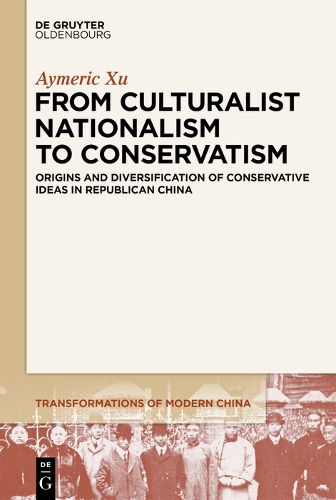Readings Newsletter
Become a Readings Member to make your shopping experience even easier.
Sign in or sign up for free!
You’re not far away from qualifying for FREE standard shipping within Australia
You’ve qualified for FREE standard shipping within Australia
The cart is loading…






This title is printed to order. This book may have been self-published. If so, we cannot guarantee the quality of the content. In the main most books will have gone through the editing process however some may not. We therefore suggest that you be aware of this before ordering this book. If in doubt check either the author or publisher’s details as we are unable to accept any returns unless they are faulty. Please contact us if you have any questions.
What does it mean to be a conservative in Republican China? Challenging the widely held view that Chinese conservatism set out to preserve traditional culture and was mainly a cultural movement, this book proposes a new framework with which to analyze modern Chinese conservatism. It identifies late Qing culturalist nationalism, which incorporates traditional culture into concrete political reforms inspired by modern Western politics, as the origin of conservatism in the Republican era. During the May Fourth period, New Culture activists belittled any attempts to reintegrate traditional culture with modern politics as conservative. What conservatives in Republican China stood for was essentially this late Qing culturalist nationalism that rejected squarely the museumification of traditional culture. Adopting a typological approach in order to distinguish different types of conservatism by differentiating various political implications of traditional culture, this book divides the Chinese conservatism of the Republican era into four typologies: liberal conservatism, antimodern conservatism, philosophical conservatism, and authoritarian conservatism. As such, this book captures - for the first time - how Chinese conservatism was in constant evolution, while also showing how its emblematic figures reacted differently to historical circumstances.
$9.00 standard shipping within Australia
FREE standard shipping within Australia for orders over $100.00
Express & International shipping calculated at checkout
This title is printed to order. This book may have been self-published. If so, we cannot guarantee the quality of the content. In the main most books will have gone through the editing process however some may not. We therefore suggest that you be aware of this before ordering this book. If in doubt check either the author or publisher’s details as we are unable to accept any returns unless they are faulty. Please contact us if you have any questions.
What does it mean to be a conservative in Republican China? Challenging the widely held view that Chinese conservatism set out to preserve traditional culture and was mainly a cultural movement, this book proposes a new framework with which to analyze modern Chinese conservatism. It identifies late Qing culturalist nationalism, which incorporates traditional culture into concrete political reforms inspired by modern Western politics, as the origin of conservatism in the Republican era. During the May Fourth period, New Culture activists belittled any attempts to reintegrate traditional culture with modern politics as conservative. What conservatives in Republican China stood for was essentially this late Qing culturalist nationalism that rejected squarely the museumification of traditional culture. Adopting a typological approach in order to distinguish different types of conservatism by differentiating various political implications of traditional culture, this book divides the Chinese conservatism of the Republican era into four typologies: liberal conservatism, antimodern conservatism, philosophical conservatism, and authoritarian conservatism. As such, this book captures - for the first time - how Chinese conservatism was in constant evolution, while also showing how its emblematic figures reacted differently to historical circumstances.